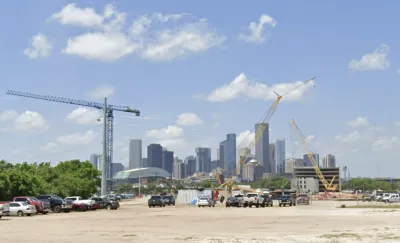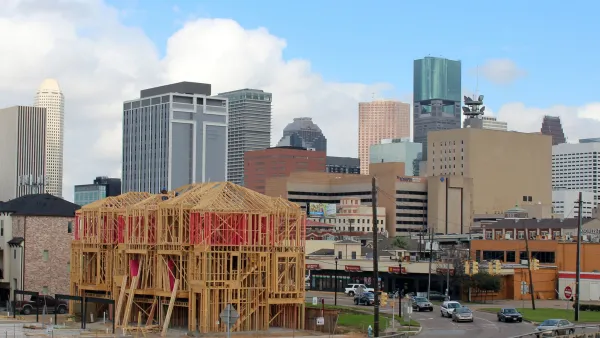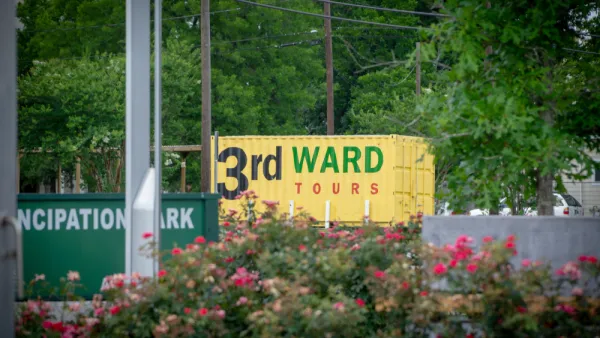Two approaches to redevelopment reveal the nuances of gentrification and neighborhood change.

In an essay adapted from his book Place and Prosperity: How Cities Help Us To Connect And Innovate and published on Next City, William Fulton describes two approaches to development in the East End, a quickly gentrifying neighborhood in Houston, Texas.
Fulton describes the area’s history as “a traditionally Hispanic neighborhood that used to be a bustling center of blue-collar business and manufacturing” and its recent and rapid transformation. Today, the neighborhood is served by a light rail line that provides a fast link to downtown Houston, and developers are building new housing.
The two projects highlighted by Fulton in this piece show two approaches to redeveloping properties in the East End. One is a sprawling mixed-use development located on the site of a former engineering complex, “perhaps the largest vacant site in any urban location in the United States.” The developer plans to mitigate the negative impacts of the project through actions outlined in a Community Benefits Agreement (CBA), a legal commitment to provide assistance to specific community causes.
The second project, run by the Concept Neighborhood group, focuses on retrofitting old buildings to house small, local businesses. Commercial tenants are charged rent on a sliding scale based on their sales. Despite these efforts to keep prosperity in the neighborhood, Fulton points out that the developers acknowledge “The value of their property will go up no matter what, to the detriment of some local residents.”
For Fulton, this illustrates the core conundrum of what we call gentrification. “Places are improved by prosperity — indeed, places cannot thrive without prosperity. But in a society with deepening inequality, places (and people) can also be overrun by prosperity.” In Fulton’s view, “The question is not how to deflect investment – but, rather, how to ensure it benefits people who live in the neighborhood already as well as newcomers.”
FULL STORY: Two Houston Developments Show Two Approaches To Gentrification

National Parks Layoffs Will Cause Communities to Lose Billions
Thousands of essential park workers were laid off this week, just before the busy spring break season.

Retro-silient?: America’s First “Eco-burb,” The Woodlands Turns 50
A master-planned community north of Houston offers lessons on green infrastructure and resilient design, but falls short of its founder’s lofty affordability and walkability goals.

Delivering for America Plan Will Downgrade Mail Service in at Least 49.5 Percent of Zip Codes
Republican and Democrat lawmakers criticize the plan for its disproportionate negative impact on rural communities.

Test News Post 1
This is a summary

Test News Headline 46
Test for the image on the front page.

Balancing Bombs and Butterflies: How the National Guard Protects a Rare Species
The National Guard at Fort Indiantown Gap uses GIS technology and land management strategies to balance military training with conservation efforts, ensuring the survival of the rare eastern regal fritillary butterfly.
Urban Design for Planners 1: Software Tools
This six-course series explores essential urban design concepts using open source software and equips planners with the tools they need to participate fully in the urban design process.
Planning for Universal Design
Learn the tools for implementing Universal Design in planning regulations.
EMC Planning Group, Inc.
Planetizen
Planetizen
Mpact (formerly Rail~Volution)
Great Falls Development Authority, Inc.
HUDs Office of Policy Development and Research
NYU Wagner Graduate School of Public Service





























